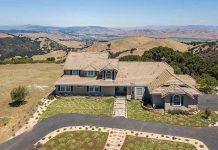Schools in the proposed Coyote Valley development should be
centrally located and be built near parks to maximize use,
consultants told the Coyote Valley Task Force this week.
San Jose has plans to develop the valley, building 50,000 homes
to accommodate up to 80,000 residents with an 80-acre lake as the
focal point. They also hope to lure jobs for some 25,000
residents.
San Jose – Schools in the proposed Coyote Valley development should be centrally located and be built near parks to maximize use, consultants told the Coyote Valley Task Force this week.
San Jose has plans to develop the valley, building 50,000 homes to accommodate up to 80,000 residents with an 80-acre lake as the focal point. They also hope to lure jobs for some 25,000 residents.
Coyote Valley lies within the borders of the Morgan Hill Unified School District (which extends to Bernal Road in south San Jose) and any development will significantly impact the South Valley region.
Consultant Ken Kay told Task Force members a narrow “central commons” of green parks spanning Fisher Creek and Coyote Creek will be a suitable location for Coyote Valley’s public schools.
“One of the goals is to create this viable corridor that will span the entire valley at 1.3 miles and be part of the public realm,” he said. “This becomes the seam of the community. It allows students and parents of the community, as well as people from the outside, to come together.”
The consultant proposed the various schools might have their own courtyards as well as sharing adjacent park fields for physical education activities.
Consultant Darin Smith of Economic & Planning Systems, Inc., told task force members top quality schools will be an important inducement to drawing residents to Coyote Valley.
“We need to have first-class schools to make efficient use of Coyote Valley,” he said. He proposed planners design schools to keep the number of students in classes low.
Project consultants said they made a planning assumption that elementary and middle schools will have an average of 20 students per classroom and high school classrooms will have about 25 students. At least 200 acres of land should be set aside for the construction of all public schools, Smith suggested. He proposed several ways to maximize the use of the land, including multi-story school facilities, joint-use of school and park lands, roof-top hard-courts for recess in elementary and middle schools, and structured parking garages.
Task force member Eric Carruthers said he thinks the multi-story school suggestion is “a great idea.”
He emphasized he’d like to see more push on high school students taking mass transit rather than using their own cars to go to school. This will help minimize parking facilities.









